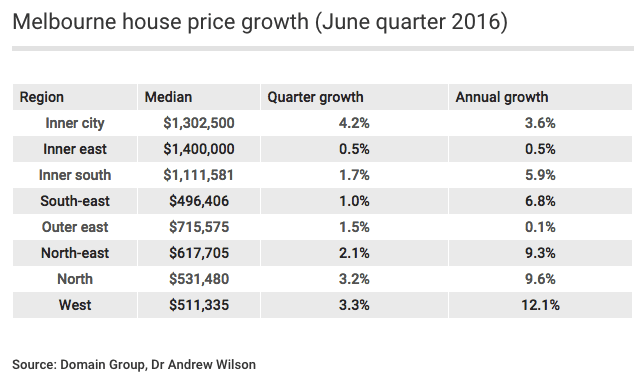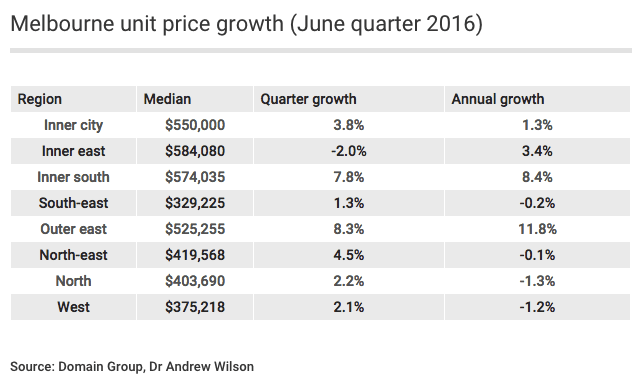This article was first published: Christina Zhou domain.com.au
Melbourne’s house prices have hit a new record median of $740,995 after almost four years of growth, and there are no signs of relief for house hunters this year.
House prices grew 1.5 per cent in the June quarter, bringing the annual rate to 7.4 per cent – the highest of all capital cities, according to Domain Group’s House Price Report, released on Thursday.
The unit median price also grew 3.5 per cent over the June quarter, but just 2.7 per cent annually, to $450,933.
The data comes a day after the HILDA survey showed Victoria had the biggest collapse in home ownership across Australia, with just 66 per cent of households owner-occupied compared with almost 74 per cent in 2001.
Official interest rate cuts, lower stock levels and more investors hunting for properties ahead of the federal election were drivers of the market, experts say.
With the eastern suburbs taking a back seat after a strong run, the northern and western suburbs are now leading the charge.
Only one of 30 properties in the north failed to sell at auction last weekend – equating to a 96.7 per cent clearance rate.
Across Melbourne, the clearance rate soared to a year-high of 80 per cent last Saturday, surpassing the previous high of 77.9 per cent in February.
Melbourne’s median house price is on track to record 5 per cent growth or more this year, about a third of last year’s, Domain Groups chief economist Andrew Wilson said.
The rush of investors back into the market – in case there was a change to negative gearing – had been a part of the energy pushing up prices, he said.
“Even if we get another interest rate cut or maybe two, which is a possibility this year, I don’t think we’ll get the type of quarterly growth rates that we had at the peak of the market last year,” he said.
AMP Capital chief economist Shane Oliver said a loss of momentum in Melbourne’s property market came after the Australian Prudential Regulation Authority’s measures to slow investor lending last year.
But the market was still fairly solid and hadn’t crashed despite talks of price falls, he said.
“Interest rates are so low that investors are still looking for a decent place to park their money given … volatility in other markets like shares,” Dr Oliver said.
“[Prices] are probably going to keep growing, but I suspect that the pace might continue to slow.”
Barry Plant chief executive Mike McCarthy said one driver of price growth was lower stock levels compared to this time last year.
People might have put their decisions on hold because there was a general feeling late last year that the strong run had come to an end, he said. As those vendors saw that prices were still rising, they might consider putting their property on the market.
Across the metro area, the median house price rose the fastest over the year in the west and north, at 12.1 per cent and 9.6 per cent respectively.
Jas Stephens managing director Craig Stephens said the inner-west was very sensitive to interest rates because it was popular with first home buyers and young couples.
Official rates cuts over the past 12 months and the possibility of further rate cuts gave young buyers confidence to bid aggressively at auctions and private sales, he said.
Jellis Craig chief executive Nick Dowling said the inner-north had become one of most attractive and active cultural areas.
“A lot of the generations coming through aspire to live in the inner-north now; the likes of Fitzroy, Brunswick and Northcote, as opposed to the default aspiration being inner-east or inner south-east,” he said.
“The rate of price growth has come off in the last quarter in the eastern suburbs a little bit due to a small reduction in appetite from offshore investors.”
The Victorian stamp duty surcharge for foreign buyers had increased from 3 to 7 per cent from July 1, and there is also some uncertainty in offshore economies.

